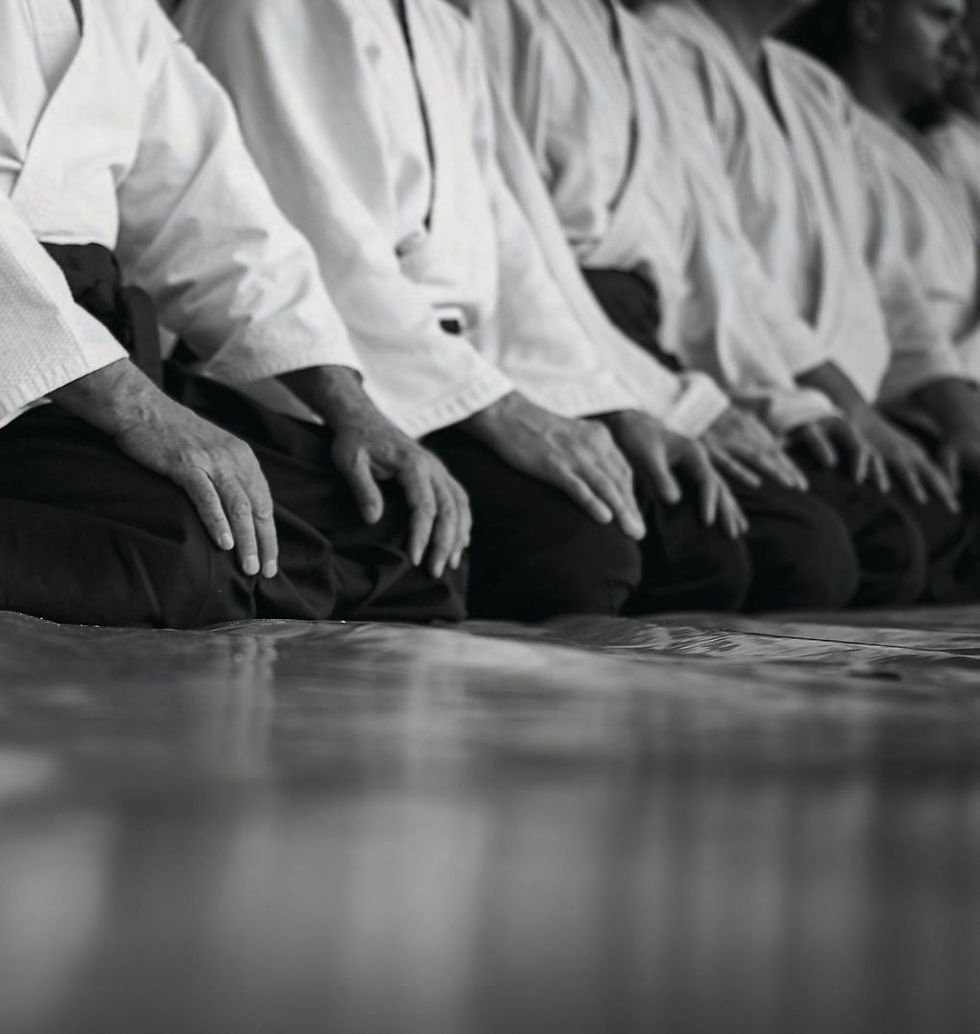Truly Understanding the Phrase: "Read the Air"
- Dave Lowry
- Nov 10, 2023
- 4 min read
If you follow any of the social media used by young people in japan, you’re probably familiar with the initials “KY.” It may sound mysterious. It won’t be any less so when you learn that ky stands for Kuuki Yomei. Even if you speak Japanese, it may not mean much: “Read the Air.” Knowing what it refers to can influence the way you train in the dojo.

There probably has never been a civilization that has as much homogeneity as that of Japan. In contrast, there probably has never been a society as heterogeneous as that of the United States. Think about it: No Japanese person ever says to another, “What country did your ancestors come from?” All Japanese came from the same place.
In a nation where everyone shares the same history, cultural norms and standards, there’s a lot that doesn’t need to be explained. A lot can be taken for granted in personal interactions. It’s an exaggeration, but if a Japanese person feels uncomfortable, the majority of the other Japanese people in the room will — or can — know it. There’s a typical body language that’s expressed. It’s easy to read. In the Japanese dojo, it’s similar: If your teacher is pleased with you, you will — assuming you can read the signs — know it. Likewise if he’s unhappy.
What this means is that a great deal of communication can take place without words. Now, way too much has been made of this by Western “experts” on Japan. In some cases, it’s been blown ridiculously out of proportion. Further, it’s absurd to think that all Japanese react to flattery or insults or frustration or happiness in precisely the same way. In general, however, social clues are at least reasonably reliable in the dojo and elsewhere.
Classes in a lot of Western karate dojo commence when a senior student sees the sensei walk into the training area and roars, “Line up!” Interestingly, in classical martial arts dojo, this usually doesn’t happen. What happens is that the senior sees the teacher come in and, without making a big deal of it, walks to his place where the lineup is to form. His juniors notice it. Nothing is said. All students automatically take their place. There’s no need for words.
This may seem trivial, but it’s actually an important part of training — or, at least, it was during the period when those in the dojo were likely to use their arts in battle. In a battle like the ones those people knew, as in all battles, much was chaos: noise, frenzied action, fear. Communication, if you were depending on a verbal or visible message, was dicey. No, you had to be able to “feel” what the group around you was expressing, to sense it and to react. Warfare in Japan included individual combat. It depended primarily, though, on formations and group action. All that “lone samurai” stuff
is romantic nonsense. If a samurai couldn’t work in a group, he died.
Many Japanese terms are used to describe this nonverbal communication. A group, tightly knit through training of a martial sort, is sometimes called a dantai, which implies individuals who are moving as a single, effective unit. Haragei, literally “belly art,” is a word that describes the communication that comes viscerally. (It’s interesting that this word was probably coined by a Westerner trying to explain it.) This brings us back to kuuki yomei. To “read the air” means to be able to sense what’s going on without being told.
It’s critical for the serious karateka to develop a relationship with a real teacher that’s based on being able to read the air around that teacher and in the dojo in general. Visit a dojo, a real one, on several days and you’ll see what might look like a different place. One day, the mood is lighthearted with some joking and people enjoying themselves. Other days, the mood is tense, tight. Nobody’s talking. Everyone is working with deadly seriousness. These differences arise because the students in the dojo can read their teacher. They know that on this day, he’s happy with them and with their training. On that day, he’s seeing something he doesn’t like. They respond to both accordingly.
Now, we’re not talking about teachers who are mentally unbalanced, who veer from smiling to snarling in the blink of an eye. We’re talking about sensei who know when their students are doing their best and when they’re slacking off, when they’re completely involved in the session and when they’re drifting. The students, especially the seniors will be sensitive to this, as well.
Think of the dojo as a kind of ant colony. The seniors are those who have one antenna keyed to what’s going on around them. They may be chatting with others before the day’s training begins. They have their other antenna tuned to their teacher — even if he’s just standing around, talking with others. They very quickly will be able to determine what he wants. Juniors will be tuned to their seniors and will key off them.
There’s no easy way to learn to read the air in the dojo around one’s teacher. If you think learning karate is confined to coming in, taking a lesson, practicing and then leaving to go on with your life, you’re out of luck in acquiring this talent.
You have to concentrate, to focus, to be aware of everything that’s going on in the dojo. It demands time and incredible effort. If you want to say that you do a Japanese martial art, you won’t have a better chance to actually do that than to learn to read the air in a dojo.
Dave Lowry has written Karate Way since 1986. For more information about his articles and books, visit blackbeltmag.com and type his name into the search box.


